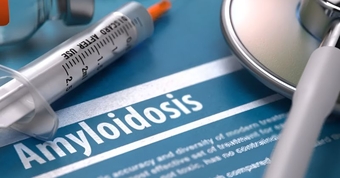Amyloidosis is not a single disease but a group of conditions that result from amyloid protein accumulation in the body's organs and tissues. It can affect different parts of the body, leading to a wide range of symptoms. Because it's more prevalent among seniors, understanding amyloidosis is crucial for early detection and management.

Types of Amyloidosis
AL (Light Chain) Amyloidosis: The most common type, caused by an abnormality in the bone marrow's plasma cells. It can affect the kidneys, heart, liver, and other organs.
AA (Secondary) Amyloidosis: Often associated with chronic infectious or inflammatory diseases, AA amyloidosis mainly affects the kidneys, liver, and spleen.
Hereditary Amyloidosis: A rare form passed down through families, affecting the nerves, liver, and heart.
Senile Systemic Amyloidosis: Mainly affects the heart and is more common in older adults.
Symptoms to Watch For
The symptoms of amyloidosis are as varied as the types of the disease, often resembling those of more common conditions. They can include fatigue, weight loss, swelling of extremities, numbness or tingling in the hands and feet, and irregular heartbeat. Recognizing these symptoms early and consulting a healthcare provider can lead to a timely diagnosis.
How to Cure Amyloidosis: Understanding Treatment Options
While "cure" might be a strong word given the complexity of amyloidosis, there are effective treatments available that can manage symptoms and improve quality of life.
Chemotherapy: Used primarily for AL amyloidosis, chemotherapy targets abnormal plasma cells in the bone marrow to reduce the production of amyloid proteins. The process involves administering drugs that kill fast-growing cells, including the abnormal ones causing amyloid production.
Targeted Therapy: For certain types of amyloidosis, medications that specifically target abnormal proteins can be effective. These treatments focus on stabilizing or removing the misfolded proteins that form amyloid deposits.
Stem Cell Transplant: A more aggressive treatment option for AL amyloidosis, involving high-dose chemotherapy followed by replenishing the bone marrow with healthy stem cells. This procedure aims to reset the bone marrow to stop the production of abnormal proteins.
Supportive Care: Managing symptoms and preventing complications are key aspects of treating amyloidosis. This might include medications to control heart failure, kidney dialysis for kidney involvement, or specific interventions for other affected organs.
Conclusion
Advances in medical science continue to improve the outcomes and quality of life for those affected by this condition. Remember, you're not alone. Building a support system of healthcare providers, family, and friends is crucial. Engage with communities and resources that understand your journey. Stay informed, be proactive in your care, and never hesitate to seek help or ask questions.




